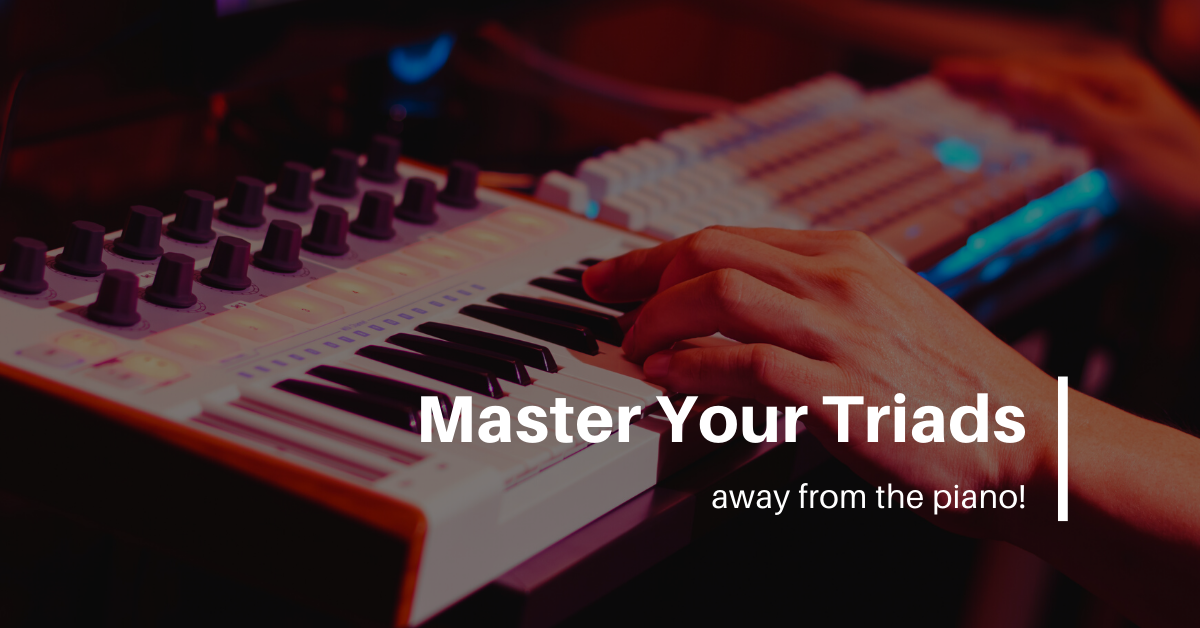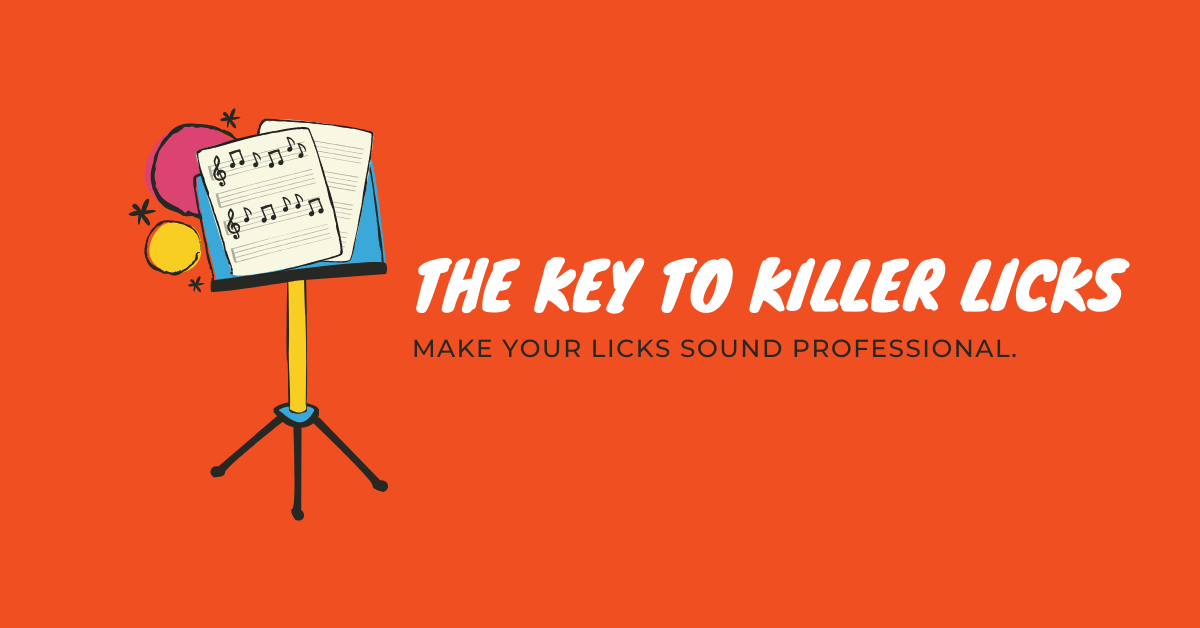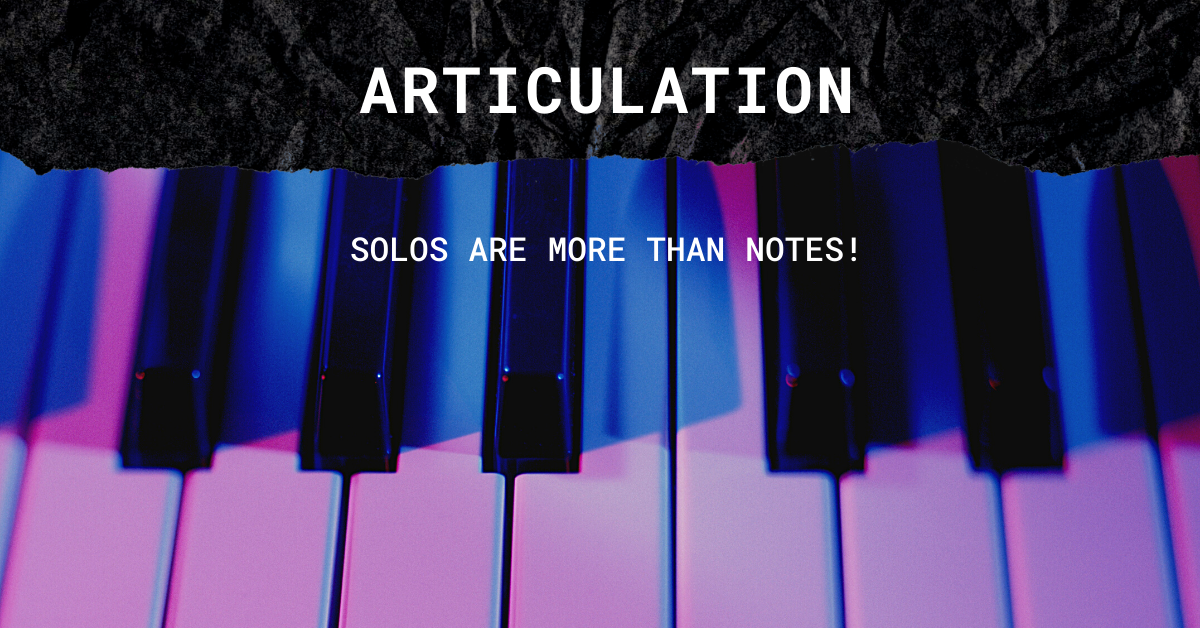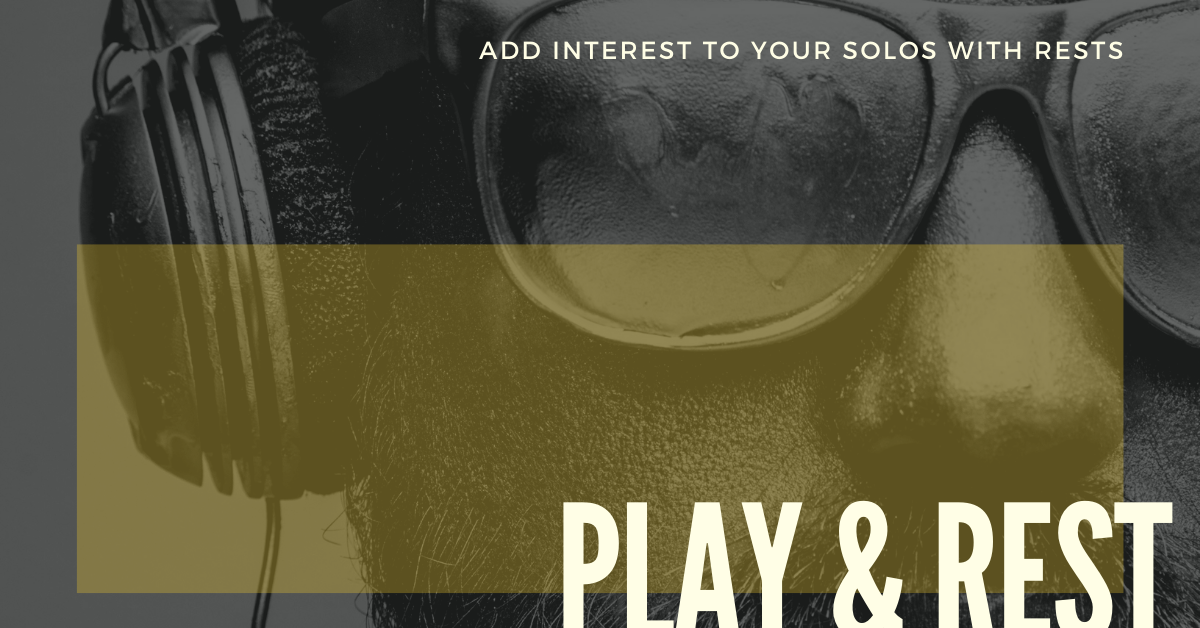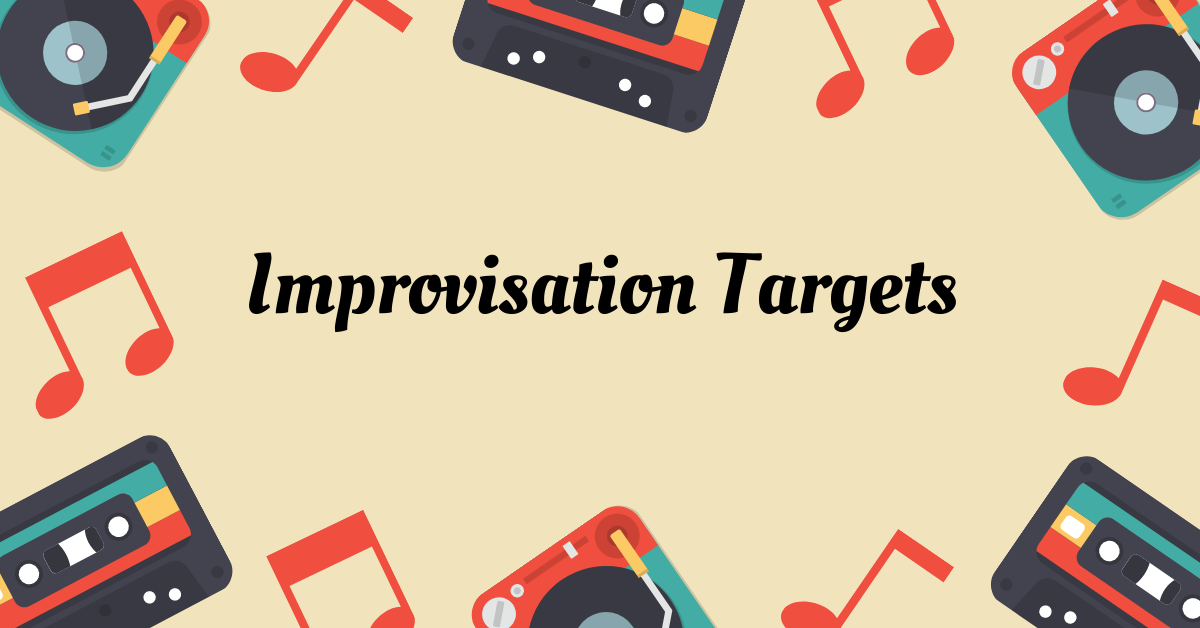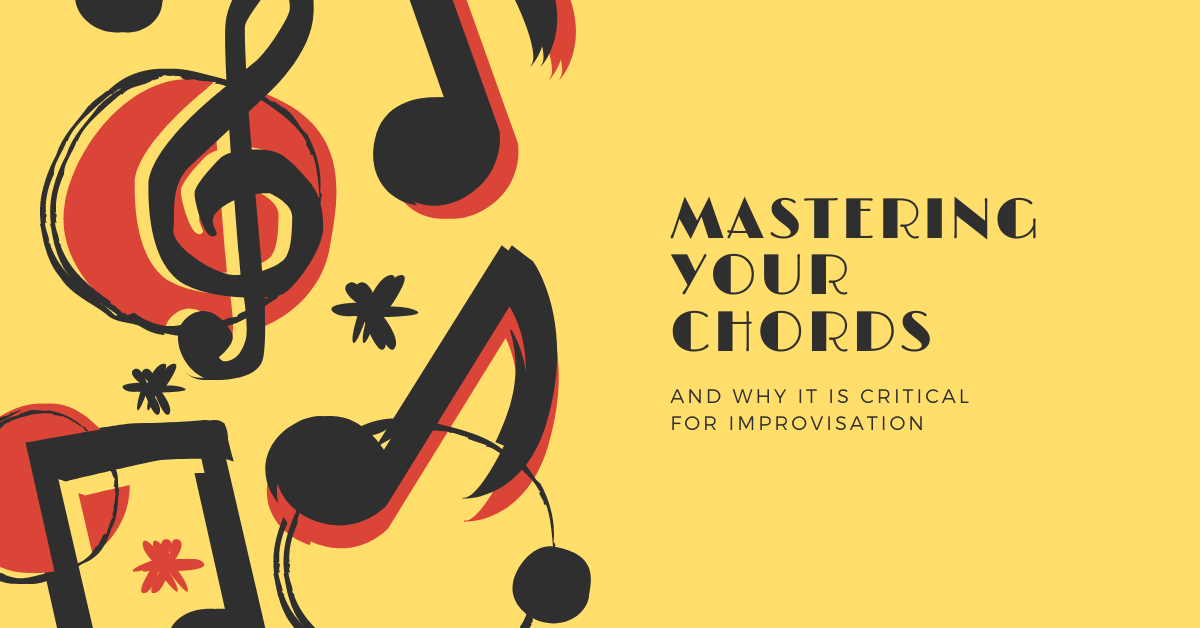How to master your triads away from the piano.
0:06
Hey guys, Willie Myette
0:07
creator of jazz edge want to welcome you to episode number seven of the confident improviser podcast. Today we are going to talk about, we’re going to have a practice session on triads. Right I’m going to show you how to master your triads away from the piano, I want to remind you that this podcast goes hand in hand with my confident improviser course found at jazz edge. So it’s a great supplement to that course. And also there is a video replay within the course. You can also find more information about the program at the confident improviser.com. Okay, so practice session triads. First of all, why should we practice away from the piano? The first reason is, it’s a great way to internalize theory, right. So when you’re practicing stuff away from the piano, you don’t have the benefit of seeing the keys right in front of you, you don’t have that tactile sense. So you really have to get the keys in your mind’s eye. So like when I see the key of C, you know, if you’re looking at the virtual keyboard here in the video, right, you see all the arms lit up, like I’m seeing all of these notes in my mind’s eye, if I move to the key of F, then I have that B flat right in my mind’s eye as well. So I can visualize what that scale looks like in each note of the scale, just in my mind’s eye without having to see it. The other thing that’s great about it is it’s really encourages multimodal learning real quickly, remember, multimodal learning as we learn all in different ways, some of us are more aural listeners in which we have to hear it, some of us have to see it, some of us have to like actually get hands on and do it. So this is just another way another mode that you can use to be able to learn and who knows, this mode might really speak to you and speak to your learning style. So until you try it, you don’t know. Third thing is it’s also intellectual expression. So we’re very used to like, you know,
2:08
right, we’re used to playing at the piano and being able to express ourselves by playing notes. Now, this gives us an opportunity to still be making quote unquote, music and expressing ourselves through music, but in a more intellectual way, right. And that’s good, because that kind of ties in with our multimodal learning. The other thing too, is, it’s truly the path to mastery. If you can’t spell your scales can’t spell your chords, be able to visualize all of that away from the piano, then you really haven’t mastered it yet. Right? So think about it, like you know, your times table, you know, one times one, one times two, one times three, like all of that stuff, you’ve memorized all of that you don’t have to like fill it all out and try and figure it out. That stuff is memorized and you memorized it in school. And now you own it, you master it. Okay, so how do we do this, the first thing you do is pick a tonality. So that means that Okay, we’re going to do like say major triads, or minor triads are diminished or augmented. So start with one tonality I say for right now, let’s start with major triads. Second thing is picking inversion. So, right now I’m just going to say root position. So remember, in a try, it could be root position, first inversion, second inversion, root position, right? So when we’re just getting started with this, just start with the root, root position, okay? Now, bear in mind, that’s not an inversion, it’s really root position, but you get the idea, like, you know, pick an inversion, maybe you want to do first inversion, second inversion, whatever it is, but stick with one of them to start, first of all, third thing, say a random note, so not a chord, so you’re not going to say, oh, D major, you’re just gonna say D, you already know it’s going to be major. So all we need to know is what is the root of that chord. And finally, you’re going to spell out the chord tones. So now, what does that mean? spell out the quarter. As you can see, I have this in quotes. I’m not going to say, like for D major, I’m not going to say D and A j or right. And that’s spelling D major. I’m spelling the notes that are found in that D major, try it and what is it, it’s D, F sharp and egg. Don’t worry, we’re going to practice a bunch of them in just a second. And then finally, rinse and repeat. Just keep going on doing it over and over and over again. Okay, so now what we’re going to do is, we’re going to try a couple right now. And this is going to be a good practice session for you when you go through all 12. But we’re going to do them randomly. Now just to make sure that I get through all 12. I’m going to bring this over here and get my randomization sheet so that we just do it all in order here. Okay, so all right, so let’s start with F, right? So it’s going to be F major. So what are the notes of an F major triad? I’m going to give you an opportunity to say it then I’m going to say it after afterwards. So this would be a good way for you to practice. So F major
4:57
F, A C, what about a So what is a major, A, C sharp, E, D major, D, F sharp, a, in fact, let’s go back, I’m gonna do this one more time F major, f AC,
5:15
I’m gonna play it for you as well. Okay, so here it, f AC, alright, and then a major, A, C sharp, E,
5:25
D, Major, D, F sharp, A, B, flat Major, B, flat, D, and F, right, just gonna switch this. So we have all everything is flat. So right now, B flat, D, and F for B flat major, A flat major, a flat, C, E, flat, good. E major, E, G, sorry, E, G, sharp, B, E, Major, E, G, sharp, B, D flat major, D flat, F, A flat, B major. That’d be B, D sharp, F sharp, C major. That’s pretty easy, right? C, E, G, G flat major, G
6:25
flat,
6:27
B flat, D flat, E flat major. That’s E flat, G, B flat. And then finally, G major. That is G, B, and D. Now I have this randomization chart, okay, that you can go ahead and download. Right in the jazz head site, there’s a lesson I did that is entitled master every chord using this exercise. And these randomization charts are great way of practicing your chords, without you know, going through like the circle of fifths or circle of fourths, which your your ears are going to get very accustomed to, very quickly and you’re going to know what’s coming next. Okay. All right. So let’s try a couple more this time. Let’s go through and let’s do minor chords. Alright, so let’s go ahead through and we will do minor chords, we’re going to do a different different one now. Okay, so here we go. C minor, C, E, flat, G, G, minor, G, B flat, D, E minor, E, G, B, B flat minor, B flat, D flat, E flat, minor, E flat, G flat, B flat, a minor, A, C, E, D flat minor, D flat, F flat, or E, you can think of it as well, and a flat, it’s best to think of it as D flat, F flat and a flat rather than E. Okay? Because for you to write it out, you’d write it as an F flat. Same note, still the note E, but we would say f flat, B minor, B, D, natural, F sharp, G flat minor, G flat. This one’s kind of tricky. The enharmonic spelling would be B, double flat. Okay, that’s what we’d say. But we could also just say a for right now, right? And then D flat. So G flat, B double flat, D flat, or G flat, A and D flat. In case you’re wondering what that is all about that term is an harmonic. And harmonic is basically saying that there are more than one way, there’s more than one name for each note. So just note could be an a natural or a B double flat, right, which is a B flat and then flat it again. Okay? All right. So let’s see, we did a, G flat, F minor, F, A flat, C, D minor, D, F, A, and finally, a flat minor, a flat,
9:35
C flat, E flat. So a flat, C flat, E flat. You might also think of it as a flat, B, an E flat. Okay. All right, so now we’ve gone through and we’ve done all of our major and minor root position triads. So you should go through and just make sure that you practice those and what you could do is you could literally just write out on a sheet of paper, all 12 chromatic tones in a random order, like the order I just did here, C, G, B flat, E flat, A, D flat, B, G flat, F, D and A flat, that gives you all 12. Right. But in a random order, you don’t have to do that order. In fact, what I would say is try coming up with different orders. Or you could just on the spot, just kind of like say it out loud, like as you’re walking down the street or whatever. Alright, F minor, F, A flat, C, B minor, B, D, F sharp, E flat, Major, E, flat, G, B flat, D, Major, D, F sharp, a, right, and try and make sure that you get the sharps and the flats correctly, you’re not going to mix sharps and flats, right? So for instance, you know, in E flat, if I’m going to say E flat minor, I’m not going to say E flat, F sharp, B flat, right, I’m not going to mix flats and sharps in these triads. So if I’m using flats, then it’s going to be flats on using sharps, then it’s going to be sharps, D major D, F sharp a, right, so I’m using the F sharp now, I’m not going to say G flat, because there’s no G flat in the D major scale. Now, this is practicing triad, you can do the same stuff for practicing scales. And I encourage you to do that as well. For instance, the D major scale or what didn’t know to the D major scale, and I’m going to give you a trick right now, that works really, really well. This is like kind of like a little bit of a bonus trick. When you spell a major scale. Notice what I’m saying a major scale, right? I’m not saying an altered scale, half whole diminished, or anything like that, those scales might have mixes of sharps and flats in them. But when you are spelling a major scale, we have 12 major scales, right, you are going to use each note one time, right, and you cannot double A note. So that means that it is going to go D then e then not G flat because we would have been skipping over F it’s D, E, F sharp. So now I know that in the key of D, I have to use an F sharp, so it’s D, E, F sharp, G, A, B, C sharp D. Now, you might also wonder, wait a second, how do I figure out my major scale? If I’m away from the piano? Remember, there’s a pattern to the major scale, it’s actually pattern to all the scales, but let’s just focus on the major scale. And that pattern is two whole steps, a half step, three whole steps and a half step. So what you do if we go back to the D major example, again, we start on a note. No, I haven’t done anything yet. I haven’t gone a whole step or a half step, I just literally put my finger on the note D. So that’s it. Okay, so I’m on D. Now I go up a whole step. So that is what he right. Now I go up another whole step. Well, what is that it’s not f that’s a half step, I go up here to F sharp. Now the virtual keyboard you see says G flat, but we know better than it’s supposed to be F sharp. And what’s the rule that we know that we can’t break? The rule is that we have to use each letter in order without skipping. So if I said D, E, G flat, I just skipped over F. So I know that that’s that’s not right. So I know it’s going to go a D and I know it’s going to be an eighth and I know it’s going to be some kind of f, right, either f flat F or F sharp. In this case, it’s F sharp. Now I know what’s coming up next is some kind of a G, well, I got to go up a half step. already gone my two whole steps, right. So I started D went up a whole step to E from E and went up a whole step two F sharp now the next thing is a half step. So that’s G, another whole step after that is a, another whole step is B, another whole step is C sharp, okay? And then a half step is D. Now, I said that we don’t repeat the notes, right, we don’t repeat a letter, obviously, when we get to the very end, we’re repeating the very first one, right, because we’re going to keep going, right? So you will have to repeat at the very end. Okay. So again, D, E, F sharp, G, A, B, C, sharp, D, spelling these scales,
14:13
and these chords away from the piano, I can tell you firsthand, completely changed my playing. So when I was a teenager, and even before as a teenager, my father used to have these index cards, and we would spell scales and modes and chords and all of this stuff in the car. He was a professional photographer, we would so we would go all over the place. You know, he’d be taking pictures, and we would have these index cards in the car and constantly running through all of these theory drills. Well, when I went to Berkeley, he’s supposed to take four semesters of music theory, I was able to test out of the first two levels of music theory and start on level three, because I already knew all of this music theory before I even entered school, right. So I know for firsthand that it works. And it definitely makes a huge difference. And I’ll tell you one more anecdote. I always find it interesting when I was in theory classes at Berkeley, you know, if a teacher would say, Okay, yeah, spell, like the E major scale E, F sharp, G sharp, A, B, C, sharp, D sharp, E. And then like, you know, other musicians would be like, they’re like, oh, he then, uh, you know, they had a real hard time being able to spell out those scales, especially musicians that are not, you know, melodic instruments, like, you know, like, say, a drum or something like that, you know, drummer, it’s kind of tough because you know, you’re not dealing with melodies, right? So anyway, spelling this stuff. And doing this work away from the piano is super, super powerful. That’s why I wanted to do this podcast on it. Hopefully, you’ll go back and you’ll try refreshing, you know, and testing yourself on those. But then also make up your own stuff and just say a root, say a chord type and and spell the chord. Right. And if you have questions, remember, you can always join me on Thursdays at 1pm. Eastern, the link is on the jazz Ed site. And you can ask any of your questions for the confident improviser. Alright, that’s it for me. I’ll see you guys in the next lesson.

